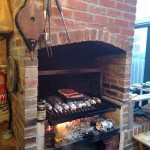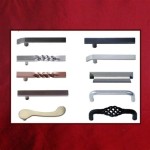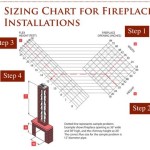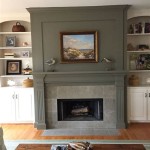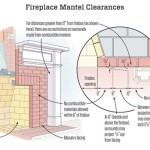Best Gas Fireplace Inserts With Blower: A Comprehensive Guide
Gas fireplace inserts with blowers offer an efficient and aesthetically pleasing solution for upgrading existing fireplaces. They provide warmth, ambiance, and convenience without the mess and maintenance associated with traditional wood-burning fireplaces. The integration of a blower enhances their heating capabilities, distributing warm air more effectively throughout the room. This article provides a detailed overview of the best gas fireplace inserts with blowers, focusing on important factors to consider when selecting the right model for individual needs and preferences.
Understanding the Benefits of Gas Fireplace Inserts with Blowers
Gas fireplace inserts are self-contained units designed to fit within an existing fireplace opening. They operate on either natural gas or propane, providing a consistent and controllable heat source. The addition of a blower, also known as a fan, significantly enhances the insert's heating performance. The blower circulates the warm air produced by the insert out into the room, rather than allowing it to rise passively up the chimney. This forced-air circulation results in more even heat distribution and a quicker warming of the space. Several advantages contribute to their popularity:
Increased Efficiency: By directing heat into the room, gas fireplace inserts with blowers minimize heat loss up the chimney, resulting in higher energy efficiency compared to traditional fireplaces. They convert a significant portion of the fuel's energy into usable heat, reducing heating costs over time.
Convenience and Cleanliness: Gas fireplace inserts eliminate the need for wood storage, hauling, and chopping. They also eliminate the mess associated with ash and soot, making them a cleaner and more convenient heating option. Operation is simple, often controlled by a remote or thermostat.
Improved Safety: Gas fireplace inserts are designed with safety features such as sealed combustion chambers and safety shut-off valves. These features minimize the risk of carbon monoxide leaks and reduce the chance of accidental fires. They offer a safer alternative to open-hearth fireplaces, particularly in homes with children or pets.
Enhanced Aesthetics: Gas fireplace inserts are available in a variety of styles, finishes, and designs, allowing homeowners to customize the look of their fireplace to match their décor. They can replicate the appearance of a traditional wood-burning fireplace with realistic flames and logs, while offering the convenience and efficiency of gas heating.
Key Considerations When Choosing a Gas Fireplace Insert with Blower
Selecting the right gas fireplace insert with a blower requires careful consideration of several factors, including the size of the fireplace opening, heating requirements, fuel type, blower performance, and aesthetic preferences. Evaluating these aspects ensures that the chosen insert provides optimal performance and satisfies individual needs.
Fireplace Opening Dimensions: The first step is to accurately measure the height, width, and depth of the existing fireplace opening. The gas fireplace insert must fit snugly within the opening, with appropriate clearances for ventilation and safety. Consult the manufacturer's specifications to ensure compatibility between the insert and the fireplace dimensions.
Heating Capacity (BTU): The heating capacity of a gas fireplace insert is measured in British Thermal Units (BTU). The appropriate BTU rating depends on the size of the room to be heated and the level of insulation. A larger room or a room with poor insulation will require a higher BTU rating. It is advisable to overestimate the BTU requirement slightly to ensure adequate heating during colder periods.
Fuel Type (Natural Gas or Propane): Gas fireplace inserts are designed to operate on either natural gas or propane. The choice of fuel depends on the availability of a gas line and the cost of each fuel in the area. Natural gas is typically less expensive than propane, but propane may be a more viable option in areas without natural gas infrastructure. Ensure that the insert is specifically designed for the chosen fuel type, as converting between the two is not always possible or advisable.
Blower Performance (CFM): The blower's performance is measured in cubic feet per minute (CFM), which indicates the volume of air it can move. A higher CFM rating generally translates to more effective heat distribution. However, blower noise levels should also be considered. Look for models with variable-speed blowers that allow for adjustments to balance heat output and noise. Some models also offer features like automatic blower control, which adjusts the blower speed based on the insert's temperature.
Efficiency Rating: The efficiency rating indicates the percentage of fuel energy that is converted into usable heat. A higher efficiency rating translates to lower heating costs and reduced environmental impact. Look for models with efficiency ratings of 70% or higher. Consider both steady-state efficiency and AFUE (Annual Fuel Utilization Efficiency) ratings for a comprehensive understanding of the insert's overall performance.
Aesthetic Style and Features: Gas fireplace inserts are available in a variety of styles, including traditional, contemporary, and transitional designs. Choose a model that complements the existing décor of the room. Consider features such as realistic log sets, flame patterns, and decorative fronts. Some models also offer options for remote control operation, thermostat control, and programmable timers for added convenience.
Top Gas Fireplace Insert Features to Consider
Beyond the fundamental requirements, several features can significantly enhance the functionality, safety, and user experience of a gas fireplace insert with a blower. Prioritizing these features contributes to a more satisfying and efficient heating solution.
Sealed Combustion: This feature draws combustion air from outside the home, rather than from the room itself, preventing drafts and improving efficiency. Sealed combustion also reduces the risk of carbon monoxide leaks, making it a safer option.
Oxygen Depletion Sensor (ODS): The ODS is a safety device that monitors the oxygen levels in the room. If the oxygen levels drop below a certain threshold, the ODS will automatically shut off the gas supply to the insert, preventing carbon monoxide poisoning.
Variable Flame Height Control: This feature allows for adjusting the flame height to control the heat output and visual appearance. It provides greater flexibility in managing the room's temperature and ambiance.
Thermostat Control: A thermostat allows for maintaining a consistent room temperature by automatically adjusting the heat output of the insert. Programmable thermostats offer even greater control, allowing for setting different temperatures for different times of the day.
Remote Control: A remote control provides convenient operation of the insert from a distance. It allows for adjusting the flame height, blower speed, and thermostat settings without having to get up.
Battery Backup: In the event of a power outage, a battery backup ensures that the blower continues to operate, maintaining heat circulation. This is particularly important in areas prone to power outages during cold weather.
Log Set Material and Design: The quality of the log set significantly impacts the appearance of the fireplace. Look for log sets made from durable materials that accurately replicate the look of real wood. Realistic flame patterns further enhance the visual appeal.
Safety Shut-Off Valve: This valve automatically shuts off the gas supply to the insert if a problem is detected, such as a pilot light outage or a gas leak. It provides an important layer of safety.
Direct Vent Technology: Direct vent systems vent exhaust gases directly to the outside of the home through a sealed pipe. This prevents exhaust gases from entering the home and improves efficiency by minimizing heat loss.
By carefully considering these factors and features, homeowners can select the best gas fireplace insert with a blower to meet their specific heating needs, aesthetic preferences, and safety requirements. Consulting with a qualified HVAC professional or fireplace dealer is recommended to ensure proper installation and safe operation.
.aspx?strip=all)
Top 11 Gas Fireplace Insert Trends Of 2024

Majestic 30 Inch Ruby Direct Vent Gas Fireplace Insert With Blower

Best Gas Fireplace Inserts Fireplaces Direct Learning Center

How To Buy A Gas Fireplace Insert Buyer S Guide From Regency

Best Gas Fireplace Insert Top 5 For Existing Fireplaces

Best Gas Fireplace Inserts Fireplaces Direct Learning Center

Top 11 Gas Fireplace Insert Trends Of 2024

The Best Gas Fireplaces Of 2024 Direct Learning Center

The Best Gas Fireplace Inserts Of 2024 Family Handyman

A Step By Guide To Understanding Fireplace Inserts

